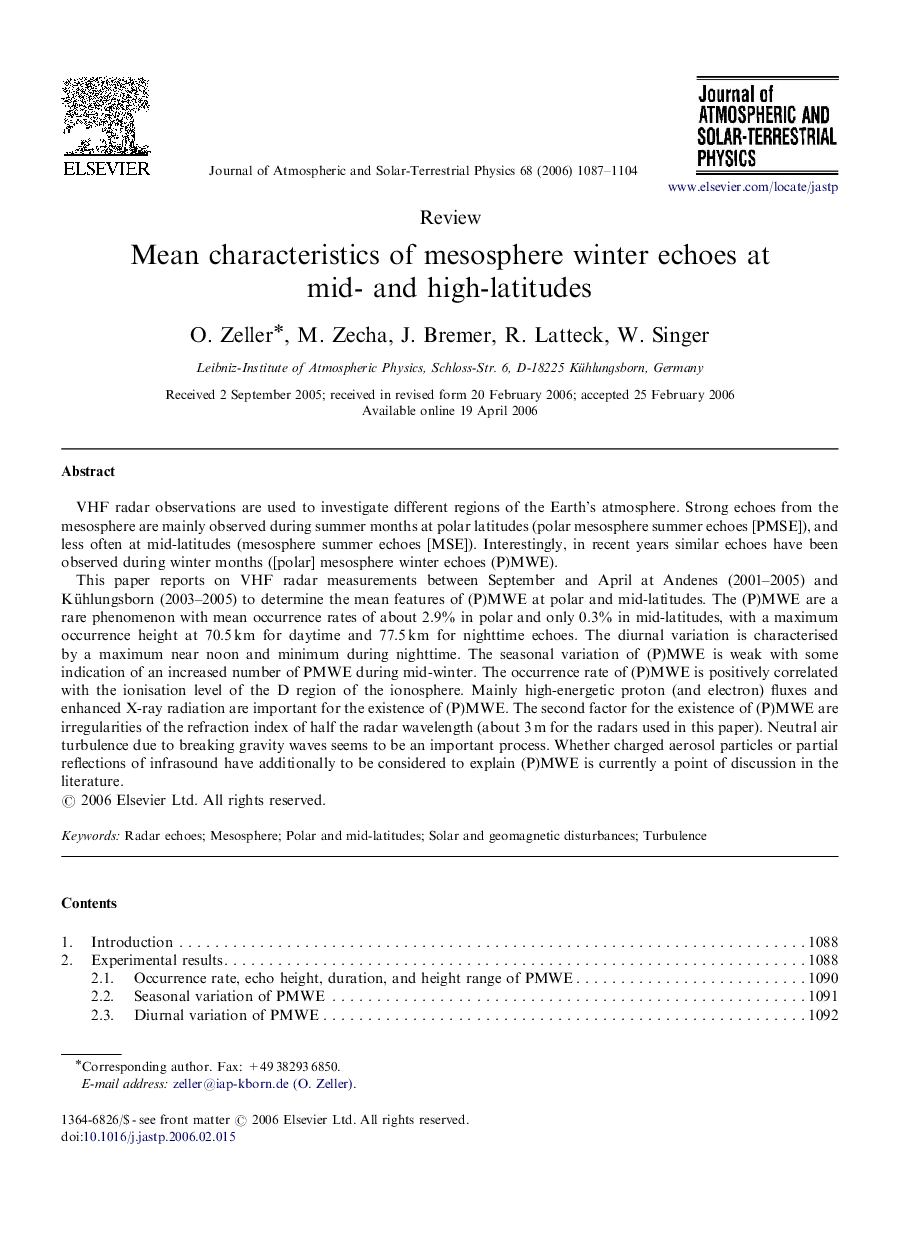| Article ID | Journal | Published Year | Pages | File Type |
|---|---|---|---|---|
| 1778404 | Journal of Atmospheric and Solar-Terrestrial Physics | 2006 | 18 Pages |
Abstract
This paper reports on VHF radar measurements between September and April at Andenes (2001-2005) and Kühlungsborn (2003-2005) to determine the mean features of (P)MWE at polar and mid-latitudes. The (P)MWE are a rare phenomenon with mean occurrence rates of about 2.9% in polar and only 0.3% in mid-latitudes, with a maximum occurrence height at 70.5Â km for daytime and 77.5Â km for nighttime echoes. The diurnal variation is characterised by a maximum near noon and minimum during nighttime. The seasonal variation of (P)MWE is weak with some indication of an increased number of PMWE during mid-winter. The occurrence rate of (P)MWE is positively correlated with the ionisation level of the D region of the ionosphere. Mainly high-energetic proton (and electron) fluxes and enhanced X-ray radiation are important for the existence of (P)MWE. The second factor for the existence of (P)MWE are irregularities of the refraction index of half the radar wavelength (about 3Â m for the radars used in this paper). Neutral air turbulence due to breaking gravity waves seems to be an important process. Whether charged aerosol particles or partial reflections of infrasound have additionally to be considered to explain (P)MWE is currently a point of discussion in the literature.
Keywords
Related Topics
Physical Sciences and Engineering
Earth and Planetary Sciences
Geophysics
Authors
O. Zeller, M. Zecha, J. Bremer, R. Latteck, W. Singer,
